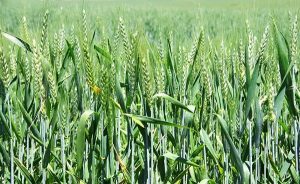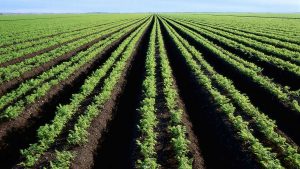
KSG Agro agricultural holding increased the multicurrency credit line at TAScombank (Kyiv) from $12 million to $18.5 million, the company said in a report published on the website of the Warsaw Stock Exchange on Monday.
“We can use these lines for sowing and harvesting […] In addition, one of the goals of increasing the credit line is to refinance foreign exchange obligations and hedge currency risks,” Chairman of the Board of Directors of KSG Agro Serhiy Kasianov said.
He said that part of the funds is also planned to be used for further reconstruction and modernization of the pig breeding farm in the village of Nyva Trudova (Dnipropetrovsk region).
According to the report, hryvnia equivalent for the volume of the credit line is UAH 522 million, the term is three years. The interest rate was not disclosed.
As reported, in April 2020, KSG Agro increased the existing credit line at TAScombank by almost $4 million, to $12 million.
The vertically integrated holding KSG Agro is engaged in pig breeding and production, storage, processing and sale of grain and oilseeds.

The international agricultural research company Corteva Agriscience has implemented a pilot project in Ukraine to pollinate parental lines of sunflower seeds using bumblebees on 29 hectares in Kyiv region, the company said in a press release on Tuesday.
“Pollination of the field with the help of bumblebees, compared to fields that were not additionally pollinated, contributed to an increase in yield by 70%. Compared to fields that were pollinated by bees, the yield of seeds ready for sale increases by 30%,” Field Operation Manager Andriy Kuzmenko said.
The company added that the use of bumblebees ensures the genetic purity of the seeds, since they work within a radius of 1 km, and bees of 3-4 km.
Corteva Agriscience is considering continuation of the project to treat 10-15% of fields where there is a high risk of cross-pollination, the press release said.
It is noted that the Dutch Koppert became the supplier of bumblebees to the fields of Corteva Agriscience, and supplied 150 hives with bumblebees to the company in 2020.
Corteva Agriscience was formerly the agricultural division of DowDuPont and became an independent, publicly traded company on June 1, 2019. The company provides growers around the world with the most complete portfolio in the industry, including a balanced and varied selection of seeds, crop protection products and digital solutions to maximize productivity and profitability.

Ukrainian agricultural producers as of December 7 had sowed main winter crops on an area of 8.06 million hectares (98% of the forecast of 8.2 million hectares), while 79,300 hectares were sown in a week.
According to a report on the website of the Ministry for Development of Economy, Trade and Agriculture, in particular the area under wheat was 6.1 million hectares (100% of the forecast), barley – 954,700 hectares (101%), rye – 125,200 hectares (94%), and rapeseeds – 881,100 hectares (87%).
According to the State Statistics Service, the area sown with winter crops for the harvest in 2020 amounted to 8.9 million hectares, which is 0.2% more than the area for the harvest in 2019.
Winter wheat was sown on 6.4 million hectares (0.6% less than for the 2019 harvest), winter barley – one million hectares (3.9% more), rye – 135,000 hectares (16.7% more) and rapeseeds – 1.3 million hectares (0.3% more).

As of November 2, Ukrainian agricultural producers sowed the main winter crops on an area of 7.5 million hectares (91% of the forecast of 8.2 million hectares), 371,000 hectares were sown in a week.
According to a report on the website of the Ministry of Economic Development, Trade and Agriculture on Tuesday, the following crops were sown: wheat – 5.65 million hectares (92% of the forecast), barley – 867,000 hectares (92%), rye – 118,800 hectares (89%), rapeseed – 862,600 hectares (85%).
According to the State Statistics Service, the sown area of winter crops for the harvest in 2020 amounted to 8.9 million hectares, which is 0.2% more than the area for the harvest in 2019.
Winter wheat was sown on 6.4 million hectares (0.6% less than in 2019), winter barley – 1 million hectares (+ 3.9%), rye – 135,000 hectares (+ 16.7%) and rapeseed – 1.3 million hectares (+ 0.3%).

The cost of agricultural production in Ukraine in January-September 2020 decreased by 4.1% compared to the same period in 2019.
According to the State Statistics Service, the cost of crop production in January-September decreased by 6.2%, livestock products by 1.3%, material and technical resources of industrial origin used in agriculture by 10.3%.
At the same time, according to the service, the cost of agricultural production in September increased by 3.9% compared to the previous month. Thus, the cost of crop production grew by 2.9%, livestock products by 6.3%, but at the same time, the cost of material and technical resources grew by 2.3%.
As reported, the cost of agricultural production in Ukraine in 2019 decreased by 0.64% compared to 2018.

The fall of agricultural production in Ukraine accelerated in September 2020 from the same month in 2019 to 19.2% from 5.5% in August, the State Statistics Service reported on its website.
According to its data, in general, in January-September this year, the decline in the Ukrainian agro-industrial complex accelerated to 13.1% from 9.8% in the eight months.
As reported, in 2019 agricultural production in Ukraine increased by 1.1% after jumping by 8.1% in 2018 and falling by 2.2% in 2017.